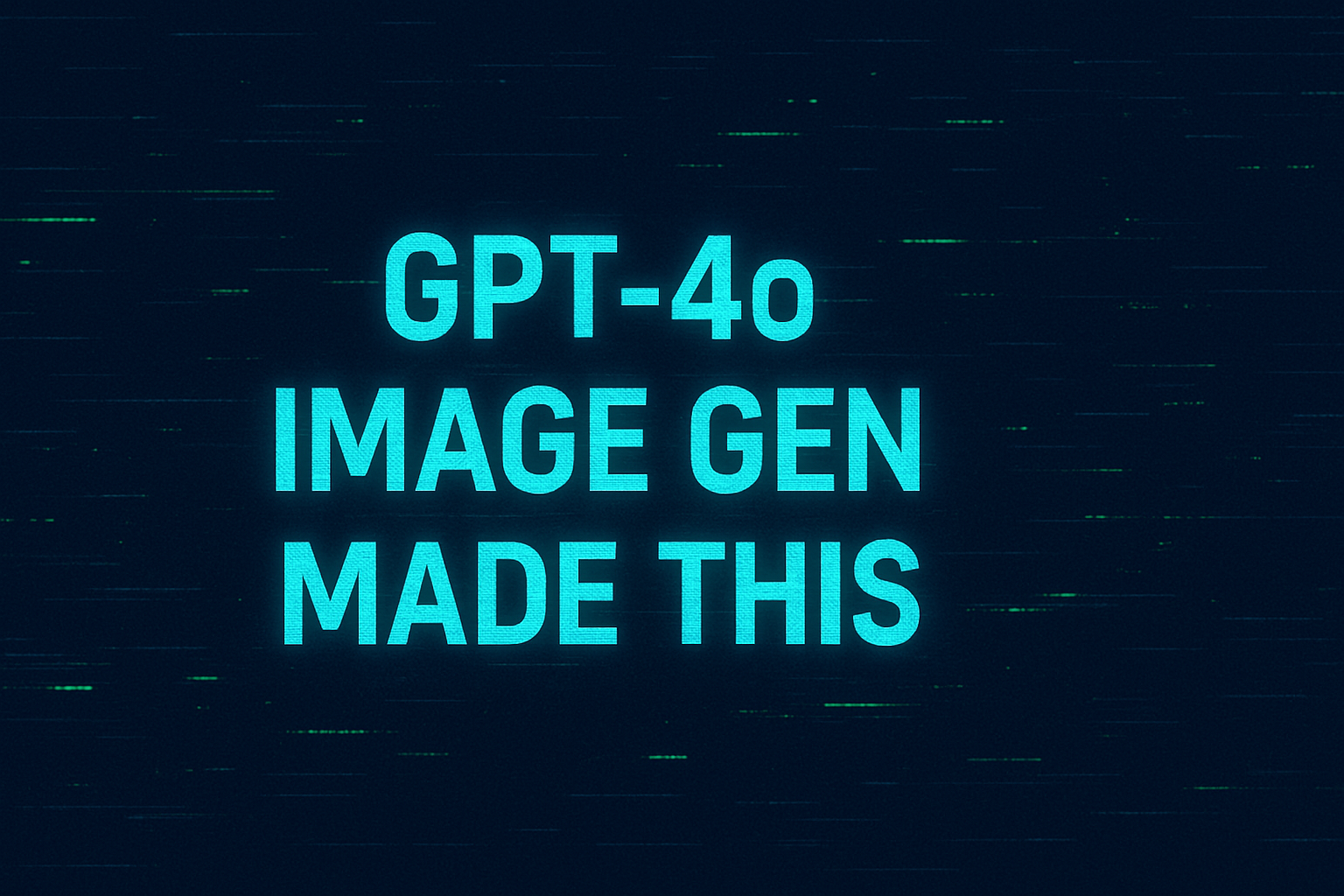
How To Prompt OpenAI's Reasoning Models: The Ultimate Guide
OpenAI's o1 and o3-mini aren't just your average AI models—they're the heavy hitters of the reasoning world. These models take a different approach, methodically working through problems rather than simply generating text. Think of it as the difference between someone giving you a quick answer versus walking you through their thought process. But here's the twist: the prompting strategies that work for standard language models often fall flat with these analytical powerhouses.
If you've been struggling to get optimal results from these models, you're not alone. The techniques that work for conventional language models can actually hinder performance with reasoning models. In this guide, I'll walk you through the essentials of effective prompting for OpenAI's reasoning models, drawing from recent research and best practices.
(For a broader perspective on reasoning models across different platforms including Google and Anthropic, check out my previous article on prompting AI reasoning models.)
Understanding OpenAI's Reasoning Models: o1 and o3-mini
Before diving into prompting strategies, let's get clear on what makes these models special. OpenAI's o3 and o1 model families are engineered to tackle complex tasks with a deliberate, multi-step thought process. They allocate more computational resources to problem-solving and engage in deeper analytical thinking than standard LLMs.
The key difference between reasoning models and standard LLMs? While standard language models primarily function as "next-token predictors," reasoning models incorporate mechanisms for more deliberate, multi-step inference, logical deduction, and self-verification. Some even employ built-in "chain-of-thought" processing and self-fact-checking without explicit instructions.
The o3-mini Model
The o3-mini model offers a faster, more affordable reasoning option with an adjustable reasoning effort parameter (low, medium, or high) that lets you balance speed and accuracy based on your task's complexity. It demonstrates particular strength in STEM-related reasoning and coding tasks.
The o1 Model Family
The o1 models (including o1 and o1 Pro) are engineered for deep, methodical, multi-step reasoning. They can outperform even GPT-4o in specialized domains like complex mathematics but come with slower processing speeds and higher costs. It's worth noting that o1 models might have an edge in creative writing and linguistically demanding tasks compared to o3-mini.

The "Less is More" Principle for Reasoning Models
Perhaps the most counterintuitive aspect of prompting reasoning models is that simpler is often better. According to OpenAI's prompting guide, these models perform best when provided with clear, direct instructions. The mantra is "trust the model's inherent reasoning abilities."
This approach contrasts sharply with prompting strategies for standard LLMs, where detailed instructions often yield better results. With reasoning models, over-complicating your prompt with excessive instructions can actually confuse the model and hinder its built-in reasoning capabilities.
For instance, a prompt like "Analyze the dataset and provide key insights" is often more effective than "Can you analyze this dataset step by step, explain your reasoning at every stage, and ensure that the answer aligns with best practices in statistical analysis?"
What to Avoid When Prompting Reasoning Models
Several popular prompting techniques for standard LLMs can actually degrade performance with reasoning models:
1. Avoid Explicit "Think Step by Step" Instructions
Perhaps surprisingly, OpenAI advises against explicitly instructing their reasoning models to "think step by step" or to "explain their reasoning." These models are already optimized for logical reasoning, and adding such instructions can sometimes hinder rather than help.
Explicitly telling a reasoning model to "think" is redundant because this is a fundamental aspect of their design. It can even interfere with their optimized internal flow, potentially leading to less efficient outputs.
2. Limit Few-Shot Examples
While few-shot prompting (providing several examples in the prompt) is often beneficial for standard LLMs, it can reduce the performance of reasoning models. It appears that additional context from multiple examples can overwhelm the model's inherent reasoning capabilities.
The recommendation? Start with zero-shot prompting (giving the task without examples), and if the initial output doesn't meet expectations, incorporate just one or two highly relevant and simple examples.
Best Practices for Prompting OpenAI's Reasoning Models
Now that we've covered what to avoid, let's focus on strategies that actually enhance performance:
1. Use Delimiters for Complex Inputs
When providing complex inputs such as multiple questions, formatted text, or structured data, use delimiters to clearly mark the beginning and end of different sections. Effective delimiters include triple quotation marks ("""), XML tags, or section titles.
This helps the model correctly interpret the structure of your request and reduces the risk of misinterpretation.
2. Be Strategic with Context in RAG Applications
For retrieval-augmented generation (RAG) tasks, provide only the most relevant context to the model. Overloading with excessive background information can dilute accuracy by making it harder for the model to focus on key information.
This is particularly important for reasoning models, as providing a focused set of relevant documents allows the model to concentrate its reasoning on the most pertinent data.
3. Clearly State Constraints and Goals
If your request has specific constraints (budget, timeframe, methodology) or a particular goal, clearly state these in the prompt. The clearer your constraints and desired end goal, the more tailored the model's response will be.
This provides necessary boundaries for the reasoning model to operate within, enabling it to generate solutions aligned with your requirements.
The Trade-Off: Which Model to Use When
Deciding which model to use involves carefully considering the trade-offs between cost, speed, and capabilities:
- For simpler tasks, standard models like GPT-4o may be more efficient and cost-effective.
- The o1 models, while highly capable in complex reasoning, tend to be slower and more expensive.
- The o3-mini model offers a faster and more affordable reasoning option, though it might have a narrower knowledge base.
OpenAI suggests that GPT-4o remains optimal for most general prompts, with the o1 models best reserved for truly challenging problems in specialized domains.
Expert Prompting Strategies for Specific Applications
Now let's explore how to optimize prompts for these reasoning models across different applications.
Data Analysis with Reasoning Models
Both o3-mini and o1 offer significant potential for complex data analysis tasks. Here are some effective prompt examples:
- For Summarizing Data: "Analyze the following dataset [insert data] and summarize the key trends and insights. Focus on identifying any significant patterns or anomalies."
- For Identifying Correlations: "Given the dataset [insert data], determine if there are any statistically significant correlations between [variable 1] and [variable 2]. Explain your reasoning."
- For Generating Visualization Code (o3-mini): "Generate Python code using pandas and matplotlib to create a scatter plot of [variable X] vs. [variable Y] from the following data [insert data]. Add appropriate labels and a title."
- For Comparative Analysis (o1): "Compare the sales performance of product A and product B based on the following data [insert data]. Identify the key differences and provide a rationale for any observed trends."
When choosing between models for data analysis, consider that o3-mini excels in faster analysis and STEM-focused tasks, while o1 is better suited for complex analysis with high accuracy requirements.
Copywriting with Reasoning Models
For copywriting tasks, both models benefit from clear instructions regarding tone, style, format, and target audience. Some effective prompt examples include:
- For Product Descriptions (o3-mini): "Write a compelling product description for [product name] highlighting its key features and benefits for [target audience]. Use a [tone] tone and keep it under [word count] words."
- For Headline Generation (o1): "Generate 10 attention-grabbing headlines for a blog post about [topic]. The headlines should be concise and encourage clicks."
- For Social Media Captions (o3-mini): "Create three engaging Instagram captions for a post promoting [product/service]. Focus on [key selling point] and include relevant hashtags."
When deciding between models for copywriting, consider using o1 for tasks requiring more nuanced creative writing or complex persuasive arguments, while o3-mini can be better for faster generation with clear instructions.
SEO Strategy with Reasoning Models
Both model families can be valuable for developing and analyzing SEO strategies. Some effective prompt examples include:
- For Keyword Research (o3-mini): "Suggest 20 relevant keywords, including long-tail keywords, for a website selling [product/service]. Organize them by search intent."
- For Content Optimization (o1): "Analyze the following blog post [insert text] and provide specific recommendations for on-page SEO optimization, including title tag, meta description, and header tags. The target keyword is [keyword]."
- For Link Building Strategy (o1): "Outline three actionable link building strategies for a website in the [industry] niche. Focus on ethical and sustainable approaches."
For SEO strategy, consider using o1 for complex strategic planning and in-depth content analysis, while o3-mini can be valuable for faster keyword research and initial SEO audits.
Advanced Techniques for Maximum Performance
Beyond the basic guidelines, several advanced techniques can further enhance the reasoning capabilities of these models:
1. Selective Use of Reasoning Explanations
While generally discouraged for these models, explicitly requesting explanation of reasoning can sometimes provide valuable insights, especially for complex scenarios.
2. Persona Prompting
Having the model adopt the role of an expert in a specific domain—like an experienced data analyst or SEO strategist—can help tailor outputs to a particular perspective.
3. Strategic Problem Decomposition
Even though these models perform internal decomposition of complex tasks, breaking down problems into simpler subtasks within the prompt can sometimes guide the model toward a specific line of reasoning.
4. Iterative Refinement
The process of refining prompts based on initial responses is crucial for achieving desired detail and accuracy. Don't be afraid to iterate on your prompts to get better results.
Practical Comparisons: o3-mini vs. o1
To help you choose the right model for your needs, here's a comparative overview of o3-mini and o1 across different applications:
Conclusion: Effective Prompting is Both Art and Science
Prompting OpenAI's o3 and o1 reasoning models effectively requires a nuanced understanding of their strengths and limitations. The "less is more" principle generally applies, emphasizing clear, direct instructions and avoiding explicit chain-of-thought or excessive few-shot examples.
Remember that specific strategies vary slightly between the model families. The o3-mini model benefits from leveraging its adjustable reasoning effort and excels in STEM-related tasks, while the o1 models are designed for deeper, more methodical reasoning in complex scenarios.
As with all AI prompting techniques, experimentation and iterative refinement remain key to unlocking the full potential of these powerful reasoning models. Don't be afraid to try different approaches and see what works best for your specific use case.
By following these guidelines, you'll be well on your way to harnessing the full power of OpenAI's reasoning models, getting more accurate, relevant, and well-reasoned outputs for your complex tasks.













